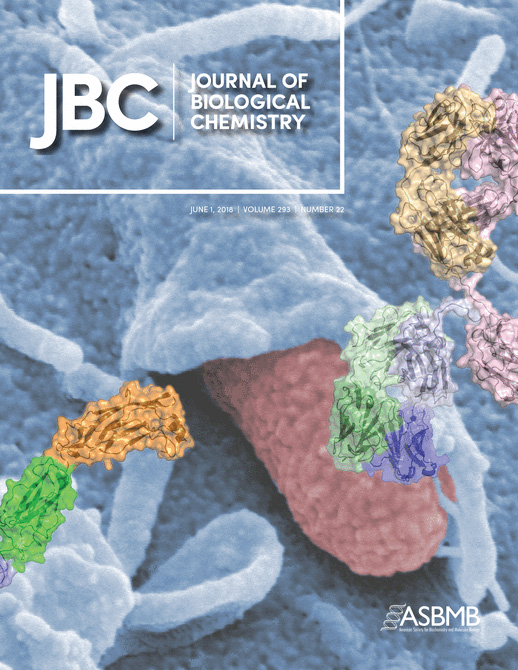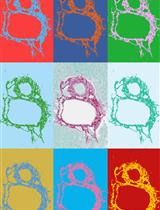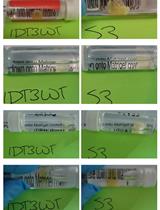- EN - English
- CN - 中文
Hippocampal Unicellular Recordings and Hippocampal-dependent Innate Behaviors in an Adolescent Mouse Model of Alzheimer’s disease
阿尔茨海默症幼鼠模型中海马单细胞记录和海马依赖先天性行为
发布: 2020年02月20日第10卷第4期 DOI: 10.21769/BioProtoc.3529 浏览次数: 4079
评审: Edgar Soria-GomezNafisa M. JadavjiAnonymous reviewer(s)
Abstract
Transgenic mice have been used to make valuable contributions to the field of neuroscience and model neurological diseases. The simultaneous functional analysis of hippocampal cell activity combined with hippocampal dependent innate task evaluations provides a reliable experimental approach to detect fine changes during early phases of neurodegeneration. To this aim, we used a merge of patch-clamp with two hippocampal innate behavior tasks. With this experimental approach, whole-cell recordings of CA1 pyramidal cells, combined with hippocampal-dependent innate behaviors, have been crucial for evaluating the early mechanism of neurodegeneration and its consequences. Here, we present our protocol for ex vivo whole-cell recordings of CA1 pyramidal cells and hippocampal dependent innate behaviors in an adolescent (p30) mice.
Keywords: Patch-clamp (膜片钳)Background
Transgenic mice have been widely used to study the cellular and behavioral alterations underlying complex brain disorders, such as Alzheimer’s Disease (AD) (Mahar et al., 2017; Mondragón-Rodríguez et al., 2018a, 2018b and 2019). The current and most accepted hypothesis regarding AD pathophysiology upholds that accumulation of amyloid-β (Aβ) lead to neurotoxicity and abnormally phosphorylated tau (pTau) in the hippocampus (Ittner et al., 2010). Additionally, several studies have suggested that protein aggregation correlates with cell damage and the cognitive deficits that characterize AD development (Selkoe, 1990; Oddo et al., 2003; LaFerla et al., 2007; Ittner et al., 2010; Mondragón-Rodríguez et al., 2014). However, there is evidence demonstrating that Ca2+ dysregulation due to presenilin (PS) mutation occurs prior to the formation of Aβ plaques and pTau accumulation (review in Tong et al., 2018; Hashimoto et al., 2018). Thus, electrophysiological data demonstrated that the PS holoprotein itself functions as a passive ER Ca2+ leak channel that is impaired in mutant PS leading to Ca2+ overload (review in Tong et al., 2018; Hashimoto et al., 2018). Of relevance, the activities of the major kinases involved in tau phosphorylation are Ca2+ dependent (review in Tong et al., 2018).
PS is ubiquitously found in cellular membranes, including the ER membrane (review in Tong et al., 2018; Hashimoto et al., 2018). PS mutation disrupts ER Ca2+ release through inositol 1,4,5-triphosphate receptors (InsP3R) and ryanodine receptors (RyR) that elevate cytoplasmic Ca2+, therefore, affecting synaptic transmission and brain activity (review in Tong et al., 2018; Hashimoto et al., 2018). Furthermore, recent evidence suggests that changes in brain activity, potentially leading to hippocampal memory alterations, occurs before any clear neurodegenerative signs appear (Mucke and Selkoe., 2012; Peña-Ortega et al., 2012; Mondragón-Rodríguez et al., 2013, 2017, 2018a and 2018b). In this regard, we have reported that brain activity self-generated in the hippocampus is affected before the detection of cognitive dysfunctions (Mondragón-Rodríguez et al., 2018a, 2018b and 2019). Specifically, we found that CA1 pyramidal neurons from an adolescent transgenic mouse model showed less spike accommodation and increased subthreshold membrane oscillations (Mondragón-Rodríguez et al., 2018a).
To achieve these findings, patch-clamp recordings of pyramidal cells were performed (first group), and hippocampal dependent innate behaviors were assessed in a p30 (postnatal day 30) transgenic AD mouse model (second group) (Oddo et al., 2003).
To evaluate how pyramidal cells are challenged during the early stages of AD development, we performed electrophysiological analyses of their intrinsic properties (Mondragón-Rodríguez et al., 2018a). Action potential properties were examined using depolarizing current steps of increasing amplitude. Additionally, subthreshold oscillations in pyramidal cells, which are the main constituents of subthreshold-level activity (Peña et al., 2010; V-Ghaffari et al., 2016) were evaluated.
To address the cognitive state (hippocampal-dependent function) of p30 transgenic mice we performed burrowing and nesting tests (Salgado-Puga et al., 2015; Gjendal et al., 2019). While, typical hippocampal-dependent tests, such as the morris water maze, are not reliable in p30 mice, burrowing and nesting are examples of highly motivated innate behaviors in rodents (Deacon, 2012; Salgado-Puga et al., 2015). Additionally, both paradigms have proven to be a reliable assay for monitoring the development of brain diseases in mice (Deacon et al., 2001; Orta-Salazar et al., 2013; Salgado-Puga et al., 2015). Thus, deterioration in the ability to perform activities of daily living is an early sign of AD development (Lilamand et al., 2019). Although several protocols exist in the literature, here we simplify and explain the procedures used by our research group with a well-defined scoring system applicable to p30 mice.
Materials and Reagents
Materials
- Behavioral tasks
Nesting- Cotton square (5 cm x 5 cm, any commercial brand)
- Handmade plastic black tube 20 cm long and 7.5 cm in diameter (The open end of the tube was elevated 2.5 cm from the floor (using two screws), to prevent accidental displacement of the tube’s content. The opposite end of the tube was blocked and touched the floor, as shown in Figure 1)

Figure 1. Homemade plastic black tube used as a burrow
- Electrophysiology
- Plastic tubing for perfusion system (Tubing Master Flex, catalog number: 065009-16; Tygon E-3603 and Tygon tubing, Cole Parmer, catalog number: 06460-34)
- Recording chamber and platform (Homemade, see Figure 8)
- Capillary glass tubing (Borosilicate standard wall with filament, length = 10 cm, Warner Instruments, catalog number: G150F-4)
- Camera with monitor (DAGE-MTI, catalog number: CCD-100)
- Double edge razor blades (Any commercial brand)
- Na2ATP (Sigma-Aldrich, catalog number: 34369078)
- LiGTP (Sigma-Aldrich, catalog number: 85737048)
- Potassium gluconic acid (Sigma-Aldrich, catalog number: 299274)
- EGTA (Sigma-Aldrich, catalog number: 67425)
- HEPES (Sigma-Aldrich, catalog number: 7365459)
- Sucrose (Sigma-Aldrich, catalog number: S9378)
- Potassium chloride (KCl) (Sigma-Aldrich, catalog number: P4504)
- Sodium chloride (NaCl) (Sigma-Aldrich, catalog number: S9625)
- Magnesium chloride (MgCl2) (Sigma-Aldrich, catalog number: M8266)
- Sodium bicarbonate (NaHCO3) (Sigma-Aldrich, catalog number: S8875)
- Calcium chloride (CaCl2) (Sigma-Aldrich, catalog number: C3881)
- D-glucose (Sigma-Aldrich, catalog number: D8270)
- Cyanoacrylate (Any commercial brand)
- Pentobarbital
- Intracellular solution for patch-clamp recordings (see Recipes)
- External solution (artificial cerebrospinal fluid (aCSF)) (see Recipes)
- Internal solution (see Recipes)
Equipment
- Behavioral tasks
Nesting- Individual cage (26 cm x 48 cm x 20 cm) with wood chip bedding
- Individual cage (26 cm x 48 cm x 20 cm) with wood chip bedding
- Electrophysiology
- Peristaltic pump (DYNAMAX, model: Rp-1)
- In line solution heater (Automatic Temperature Control, Warner Instruments, model: TC-324C)
- Temperature controller (Harvard Apparatus, model: TC-202A)
- Amplifier (Axon Instruments, model: Axo-clamp 2B amplifier)
- Connector block (National Instruments, model: BNC-2110)
- Digitizer (National Instruments, Digidata BNC-2110)
- Micromanipulator (Sutter Instrument Co, model: MP-225)
- Air table serial #119564, TMC and Faraday Cage (Homemade)
- Microscope (NIKON, model: E600-FN)
- Flaming/Brown Micropipette (Sutter Instrument Co, model: P-97)
- Vibratome (Thermo Scientific, model: Microm HM-650V)
Software
- Any available software that controls amplifier and digitizer, for example, pCLAMPTM Software. In our experiments we used software developed in LabView, National Instruments
Procedure
文章信息
版权信息
© 2020 The Authors; exclusive licensee Bio-protocol LLC.
如何引用
Readers should cite both the Bio-protocol article and the original research article where this protocol was used:
- Mondragón-Rodríguez, S., Ordaz, B., Orta-Salazar, E., Díaz-Cintra, S., Peña-Ortega, F. and Perry, G. (2020). Hippocampal Unicellular Recordings and Hippocampal-dependent Innate Behaviors in an Adolescent Mouse Model of Alzheimer’s disease. Bio-protocol 10(4): e3529. DOI: 10.21769/BioProtoc.3529.
- Mondragón-Rodríguez, S., Salas-Gallardo, A., González-Pereyra, P., Macías, M., Ordaz, B., Peña-Ortega, F., Aguilar-Vazquez, A., Orta-Salazar, E., Diaz-Cintra, S., Perry, G. and Williams, S. (2018a). Phosphorylation of Tau protein correlates with changes in hippocampal theta oscillations and reduces hippocampal excitability in Alzheimer's model. J Biol Chem 293(22): 8462-8472.
分类
神经科学 > 神经系统疾病 > 动物模型
神经科学 > 神经系统疾病 > 细胞机制
细胞生物学 > 细胞成像 > 固定组织成像
您对这篇实验方法有问题吗?
在此处发布您的问题,我们将邀请本文作者来回答。同时,我们会将您的问题发布到Bio-protocol Exchange,以便寻求社区成员的帮助。
提问指南
+ 问题描述
写下详细的问题描述,包括所有有助于他人回答您问题的信息(例如实验过程、条件和相关图像等)。
Share
Bluesky
X
Copy link











